For years, this new Apple product was derided as too expensive to compete against cheaper alternatives. Yet by targeting the premium high end first, it was able to establish itself and then attract an even broader audience of users at broader price points in the future. No this isn't about iPod, or iPhone, or iPad or Apple Watch. It's a look at HomePod, Apple's home audio device featuring HomeKit and Siri functionality, often confused with merely being a Wi-Fi microphone.
What's up with HomePod
After an initial unveiling at WWDC17, Apple ultimately shipped HomePod early last year. Befuddled observers demanded to know why was Apple introducing a product into the Wi-Fi microphone market dominated by $30 Amazon Alexa Dots.
Why not rather just cede the home audio market to Amazon, the global leader of Wi-Fi mics with an installed base of 50 million devices from Amazon alone or 100 million if you count every product sold with Alexa features, almost entirely in the United States with support for seven languages, compared to the mere 1.5 billion devices that support Siri, all sold by Apple, globally, with support for more than 20 languages. How could Apple compete in Wi-Fi mics with such a disadvantage?
Quite obviously, Apple wasn't seeking to compete against $30 Wi-Fi mics. HomePod is a high-quality speaker that enhances the HomeKit ecosystem and makes hands-free Siri that much easier. Apple's product development for HomePod was described by Bloomberg as a confused mess of incompetency rushed out on a deadline, but that was merely a creative projection.
In reality, HomePod was one of the results of Apple's largest-ever acquisition — the $3 billion purchase of Beats Electronics in 2014. This acquisition gave Apple the world's largest and most profitable headphone and speaker business, and contributed to the audio overhaul that brought much higher-quality stereo sound to iPhone 7, iPads, and MacBooks.
Apple's Beats subsidiary also gave Apple the critical mass of headphone sales to justify the development of advanced custom silicon for powering proprietary leaps above standard Bluetooth, allowing it to introduce wireless headphones with better efficiency, quick paring, better range, and iCloud-powered Continuity that makes it effortless to switch headphones between your Apple devices without manual pairing and unpairing. Apple introduced the new W1 chip on its BeatsX, Solo3 and PowerBeats 3 wireless headphones, as well as using it to launch the iconic AirPods under its own brand in 2016.
Apple is competing for the home audio experience, not ad surveillance
The next year, Apple expanded its "Pods" branding to the home. The HomePod wasn't designed to outsell $30 loss leader microphones from Amazon and Google, which are designed primarily to snoop on customers as an Internet-connected bug installed right in their homes.
And no, I'm not talking about the overblown "controversy" about Alexa, Assistant, Cortana, and Siri using human curation to verify and improve their voice recognition services. That's not really even a privacy issue. Nobody of reasonable intelligence is making highly private requests to voice services. Statistically, almost all uses of these devices are limited to music playback control and some simple requests for home automation.
The real privacy issues come from speakers being used to listen while users don't expect them to be listening, or in compiling data about users based on all of their requests over time, combined with other sensitive data including location and their use of other apps, websites, and services. These are the kinds of real security issues that have been glossed over to focus on the nothing-burger of human curation of voice requests.
Apple, unlike its Wi-Fi mic competitors, has developed secure, private mechanisms for Siri that enable it to listen for your requests without creating a cross-referenced trail of all of your activities. Amazon, Google, Facebook and other hopeful entrants into the Wi-Fi mic and home appliance businesses are effectively giving away free hardware expressly to collect and compile this information, just like the smart TV vendors who similarly sell television sets at break-even just to get their profitable, snooping surveillance services into your home where they can track all of your behaviors and then either sell this data or directly use against you for marketing purposes.
Comparing only the emerging sliver of Apple's overall Siri activity exclusively connected to HomePod against virtually the entire business of Amazon Alexa and often all of its partners is ridiculous, yet market research groups continue to do this. Canalys, for example, has been portraying Amazon as the distant leader in "smart speakers," announcing last year that it accounted for over 50 percent of the global installed base of these devices, which it predicted to reach 100 million by the end of 2018.
This just in: Amazon and Google have no presence in China
After years of hoking its horn about the global supremacy of Amazon Alexa and second-place Google Assistant in the market for cheap Wi-Fi mics, Canalys abruptly changed its tune dramatically this spring. In April, it noted that the global installed base of these devices would double just within 2019 to exceed 200 million devices, but acknowledged that most of this growth was happening in China and the rest of Asia.
The group stated, "these countries present larger growth opportunities due to the sheer number of middle-class households in the working population willing to embrace new technology. The Chinese market is one of the world's most competitive yet Google and Amazon have no presence there."
Who does? Apple.
Apple is the only Western brand to have any significant commercial presence in China. As in the United States, Apple will not be selling the most "smart speakers" in Asia, but it will be selling HomePods to the affluent market of Chinese buyers who have embraced iPhone and iPad and have helped make Apple the most profitable brand in personal electronics. The company introduced HomePod in China at the beginning of the year and added support for Japan and Taiwan earlier this month.
Last year, Canalys Research Analysts Vincent Thielke announced that "the US is the world leader in smart speaker adoption," and went on about how Amazon and Google were rushing to establish the "largest installed base" to achieve "ecosystem lock-in." Yet just a year later, Canalys is now reporting that U.S. sales of smart speakers in Q2 declined year over year by 2%.
This take wasn't unique to Canalys, It has been the common media narrative since Amazon Alexa first started to gain traction. The collective fantasy was that Amazon's vast spending on Alexa— including its loss-leader Echo hardware— was going to build a "Voice-First" platform of proprietary Amazon Skills that would rival or perhaps overshadow the iOS App Store.
That view of the future turned out to be entirely wrong. Amazon Skills have been nothing but a minor curiosity, and nobody is really using the Echo to do anything other than play songs, turn off the lights or perhaps tell a joke until the novelty of installing an always-connected Teddy Ruxpin in the home wears off. This Voice First fantasy turned out to be a major embarrassment for all of the outlets peddling Amazon's initiative as the savior that would destroy the App Store and perhaps Apple along with it.
But it's additionally remarkable that all of the market research groups dutifully reporting market share and unit sales estimates of "smart speakers" didn't seem to have any awareness that the US market where Amazon and Google were focused would nearly saturate this year despite the extremely low prices of many of these Wi-Fi mics. Most of the future growth in assistant home speaker sales would move to China, mirroring the shift in global smartphone sales that began to occur around 2010. In both cases, Apple launched its product there just as demand began accelerating, while other Western brands that had been dominating smartphone sales — notably Nokia, Blackberry, Windows Mobile, Motorola, and Palm — did a poor job of introducing or sustaining their sales there.
Apple's premium entry into China
Apple took over the premium phone market in China almost exclusively. Over the rest of the 2010s, it didn't matter that Samsung and domestic Chinese brands— including Huawei, which had been selling smartphones since 2004, long before Apple introduced the first iPhone or brought it to China— were at various points selling larger unit volumes of lower-end devices.
In reality, high volume sales of Androids have only helped to create the awareness of smartphones as a desirable consumer product. This created an installed base of consumers for Apple to offer its iPhones as an aspirational, premium tier upgrade.
Without cheap Androids fueling the expectation that a mobile phone should also have a full web browser, play significant mobile games, pack in high-performance camera, and play content wirelessly to headphones, consumers would likely default to using a cheap, indestructible dumb phone as most did in the decade prior. But if they're paying significantly for data service anyway, why not pair it with a premium quality phone that only costs a little bit more every couple years, lasts longer, is updated more frequently with prompt security updates and new features, focuses on privacy and data security, and holds a higher resale value?
Rather than "outnumbering" iPhone unit sales, the vast installed base of Android phones has been supporting iPhone sales. This has been obvious for many years. In 2013, I noted that Android was acting as the training wheels for iOS in the U.S., a role it continued to perform in China.
HomePod as a strategy
Google and its licensees haven't been effective at establishing proprietary features to keep Android users from leaving the platform. Apple has. Over the last decade, Apple has introduced tight Continuity integration between iPhones, iPads, and Macs; introduced Apple Watch and AirPods as wearables with similarly tight connectivity; and launched iMessage, iCloud, AirDrop, Apple Pay, Apple Card and other free and paid Services that keep iOS users reluctant to even examine other options. This year, the new Apple Arcade, Apple TV+ and AirPlay 2 are expanding the tight integration between Apple's products.
HomePod fits right into this by offering Siri-connected HomeKit integration and streaming playback for AirPlay 2 and Apple Music. Siri isn't flawless, and sometimes is purely frustrating in its ability to recognize a request or listen to a specific dialect — a problem Alexa and Assistant also have. Siri also still lacks some voice features pioneered by Amazon and Google. Yet this kind of feature disparity has also occurred in phones and tablets, and it simply didn't matter.
A few years ago, Amazon was selling its Fire tablets with multiple speakers and stereo sound when iPads offered just one tinny little mono speaker. Apple's recent audio overhaul has erased that lead. And over the past few years, Siri has similarly been enhanced to support voice features first launched by others, including always-on "hey" recognition and support for identifying an individual user's voice. As Apple continues to make Siri work better, the installed base of HomePod users will continue to get improvements without even having to buy new hardware.
HomePod critics are wrong
Critics declared HomePod dead on arrival from its first launch, with most focused on the price of the device compared to the cheapest of Alexa alternatives. Yet Apple's initial sales volumes— about 4 million last year, according to Catalyst's estimate— delivered revenues of around $1.4 billion. That's more money than Amazon would have brought in from sales of 46 million Echo Dots, and its low-end Alexa products are not nearly as profitable, if they make any money at all.
Apple has already launched a successful business in home audio in its first year, without needing to rival Amazon or Google in total unit shipments. Yet HomePod didn't even need to be commercially successful on its own to be strategically successful for Apple. As part of the Siri, HomeKit, and AirPlay 2 ecosystems, HomePod is a valuable product category for Apple. Like AirPods and Apple Watch, HomePod helps to keep iPhone users loyal to the iOS platform. It also supports the value of buying another Apple TV and Mac.
However, critics continue to list off reams of problems with HomePod that are largely either irrelevant or are downright wrong. Writing for Apple 3.0, Philip Elmer-DeWitt cited a critique written by MacWorld contributor Kirk McElhearn. Predictably, it starts with a complaint about pricing, noting that HomePod costs more than a Sonos One, and concluding that "this isn't a product that people are willing to pay more for, apparently."
Yet last year, Sonos reported global sales of only 4.6 million speakers in total, slightly more units than Apple's first year of HomePods that delivered just two-thirds of Apple's HomePod revenues, despite Sonos having been in the wireless speaker business since 2013.
It's false to say that HomePods are "apparently" not finding a market and are not competitive with premium speakers like Sonos when Apple launched with first-year sales on par with Sonos. Apple has since reduced the price of HomePod by $50 to $299, but Sonos has frequently slashed the price of its premium speaker in half, clearly demonstrating that it's not Apple that's struggling to find demand for its premium home speakers.
Along those lines, you don't see Canalys or other market groups comparing HomePod directly with other speakers in its price class very often. Yet in its first year, HomePod also outsold the premium-priced Google Max, despite Google's supposed lead in total shipments of Wi-Fi Mics and the ostensible superiority of its Assistant. Instead, the only free data being presented by market research groups is the same carefully contrived figures of total sales that were similarly used to portray Apple Watch as a failure from day one, right up until it effectively destroyed the entire market for wrist-worn wearables.
Next, McElhearn stated that HomePod "doesn't have a clear use," which is simply a puzzling comment to even make for a product that can be succinctly described as "a premium home speaker." He also claims it "doesn't sound that good," another line that isn't supported by anything other than the assertion that "the overall opinion among audiophiles is that it's meh." Yet "audiophiles" routinely pay $10,000 or more for fancy speakers with the kind of technology Apple is using in HomePod to deliver wide, room-filling sound with rich bass. It's pretty clear HomePod isn't being returned by disgruntled buyers.
He also makes the bizarre claim that "it's a mono speaker." HomePod is not a mono speaker. A mono speaker is a single speaker that can only deliver a single channel of audio, resulting in its sound clearly appearing to come from one source. Stereophonic sound uses multiple speakers to deliver at least two slightly different sound channels to create a wider soundscape. HomePod is a stereo speaker. It uses a ring of seven tweeters to send out stereo sound that creates a wide, surrounding sense of stereophonic sound reproduction.
Apple also supports a feature that lets you "stereo pair" two HomePods to deliver even wider sound, but that does not mean that one HomePod is "mono." Anyone who calls HomePod a "mono speaker" does not understand elemental basics of sound reproduction. McElhearn also complained that Apple's stereo pairing feature can be unreliable, requiring the user to repair the connection if it fails. This is fine to claim, but according to Amazon's support forums, users are reporting similar problems with Buggy Stereo Pairing on Alexa devices as well. Both companies only released this feature, and regularly update their products.
He then claims the design of HomePod is wrong, imaging that a stereo pair should be able to be placed on either side of a Mac, based on a scenario imagined by somebody on Reddit. This is purely ridiculous, as one HomePod delivers far more than enough sound to be placed within an arm's reach of a seated computer user. Placing one on either side of an iMac to deliver "stereo" is simply a dumb idea, based on the misconception that HomePod is a "mono speaker" and that a Mac user would need to have two of them. One HomePod in the same room as your television, paired to Apple TV, is more than enough sound even in a large living room.
The breathtaking logical leap in complaining that one Home Pod is too just expensive, but that Apple should have designed it to serve as a $700 pair of speakers to sit behind your iMac is nearly as absurd as all of the complaining about newer MacBooks requiring a $9 adapter to plug legacy USB cables into its USB-C ports, coming from the same people who are demanding to know why Apple isn't selling them a $150 AirPower pad to serve as a tremendously expensive replacement for a USB hub and a couple of Lightning cables capable of charging all your devices a lot faster than Qi induction charging can.
This illustrates the desperate level of attempts being made to find problems with a product that customers have actually been adopting and enjoying as a useful, satisfying extension of their Apple Home ecosystem. And fueling this often contradictory complaint cycle is the bad analysis from market researchers crafting data and press releases that model for a world taken over by cheap Wi-Fi mics from Amazon and perhaps Google, when in reality those companies aren't even in the largest and fastest-growing segments of the market— and do not even appear to be profitable.
Amazon has been spending tons of resources to deploy Amazon hardware, imaging that Alexa users would embrace voice-based shopping and that developers would create a rich ecosystem of voice-apps capable of generating material revenues on their own. Yet neither of those things has happened.
Instead, Apple's HomePod launched to immediate profitability in its first year, while helping to support continued sales of iPhones and other elements of Apple's ecosystem. Compare this to other new product launches, such as Instagram— which launched for free with no business model in 2010 but was considered a wild success two years later when Facebook paid $1 billion for it despite having no revenues at all. Instagram only reported $630 million in revenues in its fifth year, and was only generating HomePod-class revenues by 2016.
Now Instagram isn't a premium home speaker; it's a free app that delivers ads. Yet it was portrayed as a successful venture immediately and given half a decade to generate the revenues HomePod claimed in its inaugural year, during which virtually everyone complained about it as non-viable, DOA, not competitive and completely without any future unless it was dramatically reduced in price. That's similar to every previous Apple introduction.
Not even two full years later, Apple has already erased many of the "missing features" of HomePod and Siri, and greatly improved its Home integration while rolling out AirPlay 2, which makes the use of multiple HomePods and Apple TVs throughout the home an effortless choice. While "only" having an installed base of around 4 percent of "all smart speakers ever sold and still in use since 2014," HomePod is also pretty clearly at the top of the world's best-selling premium smart speakers, easily rivaling Sonos in scale despite that company's five year lead in the market.
Meanwhile, Apple is entering Asian markets and Mainland China, where it has a large and loyal installed base of premium, affluent users enthusiastically buying iPads and Macs and using iPhones— Apple's active installed base in China is about tied with Huawei, according to Morgan Stanley. So going forward HomePod has a much greater addressable audience than the Wi-Fi mics from Amazon and Google, which have largely already saturated demand in the US while earning virtually nothing to show for it.
In a couple of weeks, Apple's expected iPhone launch event may introduce new HomePod models, potentially following a strategy similar to iPads and Apple Watch where a single premium device was expanded into a family of models at wider price points. Perhaps we will see a less expensive model, but Apple could also introduce a "Pro" version suited to commercial uses aimed at business such as restaurants and event venues. At this summer's WWDC, Apple used HomePods throughout the San Jose Convention Center to deliver ambient music in common areas, requiring minimal setup and configuration.
Apple already enjoys relationships with hospitality and enterprise users in iOS and with Apple TV for corporate signage and presentation media streaming. Pairing these with a commercially-optimized HomePod model could greatly expand the market for such a device. Apple will also be adding new features via regular updates, even as it continues to enhance its Siri functionality on the server-side. That all makes it way too early to trot out a mock funeral for HomePod, imagining that it must be a failure if it isn't outselling $30 Dots or rivaling the scale of Apple's other businesses in its first year.
If it were an Instagram, HomePod would already be considered to be worth $1 billion and not expected to earn any revenues until 2022. And of course, it also wouldn't have any prospects of expansion into China.
So tune out the factually incorrect, frantic agitation of HomePod critics, and take media reports on "smart speakers" as being the same flawed analysis — myopically fixated on unit sales volumes and market share — that was shoved out earlier in the direction of iPads and Apple Watch.
Stay on top of all Apple news right from your HomePod or HomePod mini. Say, "Hey, Siri, play AppleInsider Daily," and you'll get a fast update direct from the AppleInsider team.
 Daniel Eran Dilger
Daniel Eran Dilger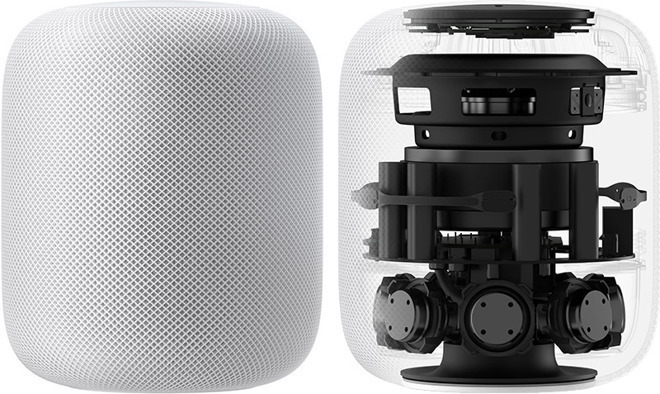
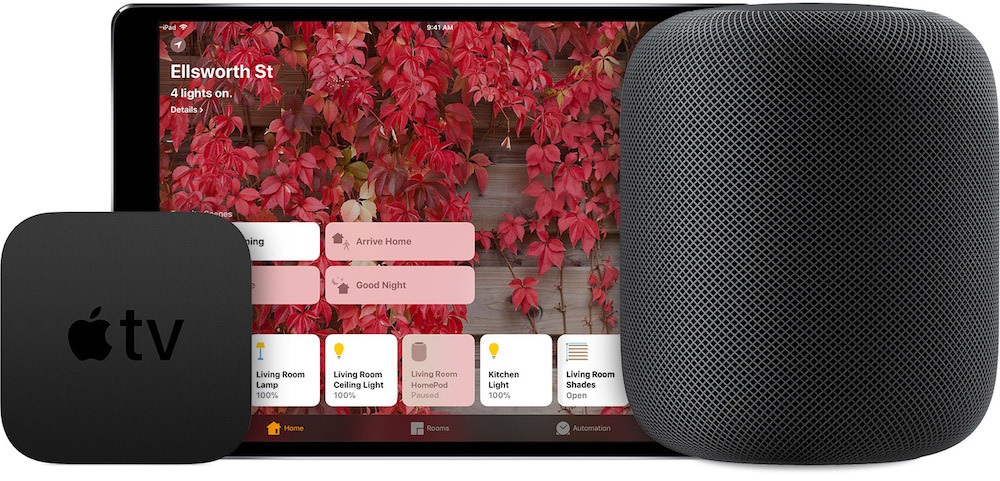
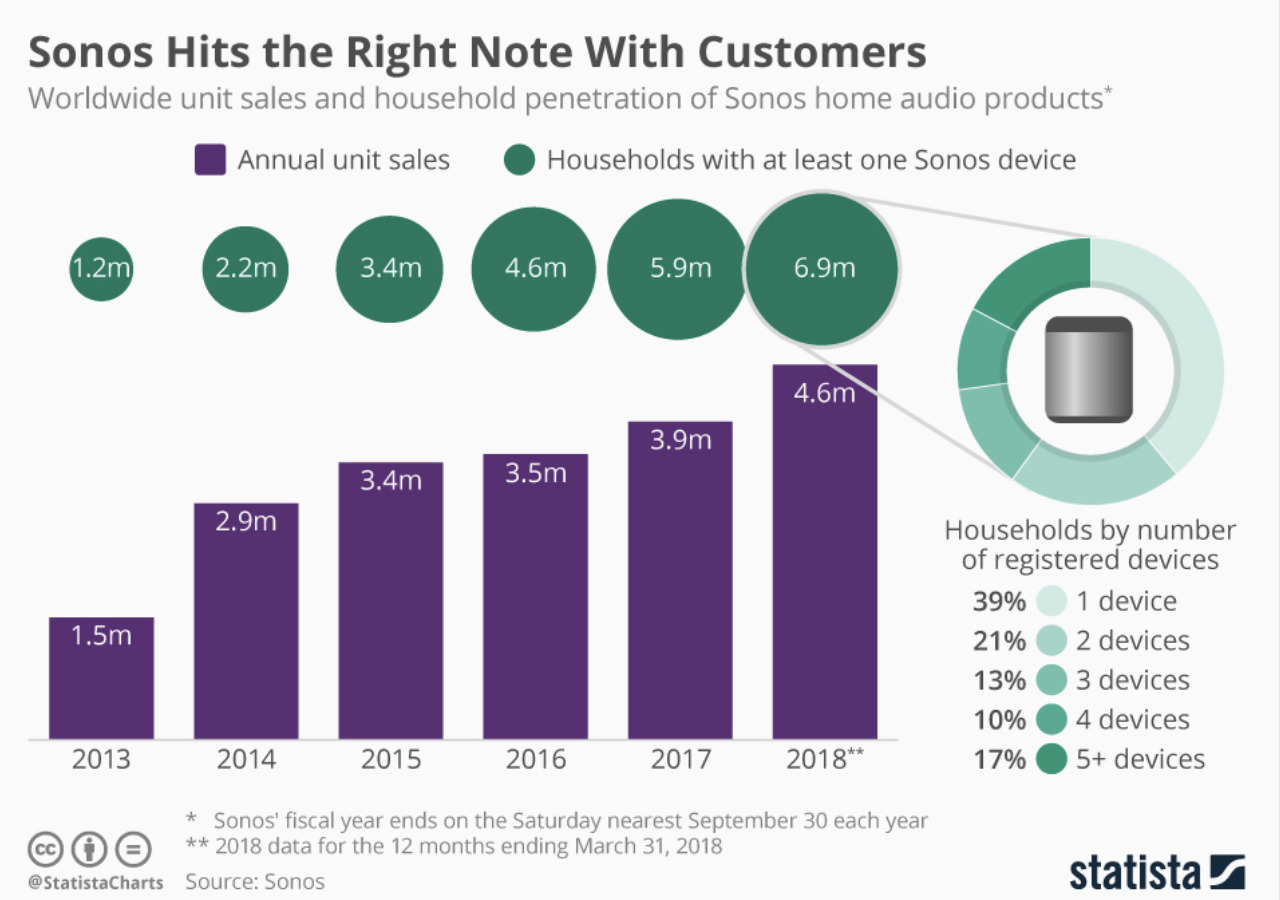

-m.jpg)






 Marko Zivkovic
Marko Zivkovic
 Mike Wuerthele
Mike Wuerthele
 Christine McKee
Christine McKee
 Amber Neely
Amber Neely
 Wesley Hilliard
Wesley Hilliard

 William Gallagher
William Gallagher
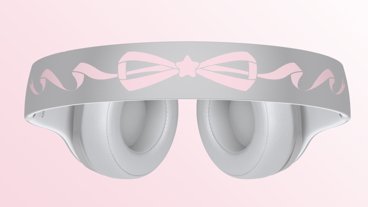
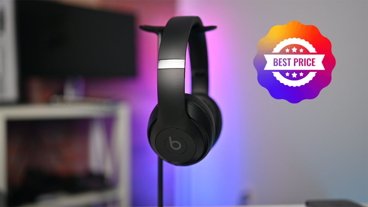








98 Comments
Only comment I'd make is that Canalys is now touted by the editor as an accepted source of factual market data. Something to keep in mind if you're looking for reliable sales data on other products and services.
Otherwise another wonderful DED article.
"Befuddled observers demanded to know why was Apple introducing a product into the Wi-Fi microphone market dominated by $30 Amazon Alexa Dots.” Befuddlement is the name of the game on tech blog comment sections. The constant drone of what Apple must do to survive, the incessant carping about price, the obligatory denigration of any product released by Apple as too little, to late, too expensive, is the very definition of befuddlement here on AppleInsider. The critics have no clue and the resident detractors who unfailingly explain why Apple is lost and their brand is superior in every way can’t explain why they are here commenting or why Apple continues to succeed. Befuddlement FTW!
According to the latest numbers, the HomePod has a 7% marketshare here in the US. That percentage has been shrinking, from a high that itself was pretty low. It’s well behind the market leaders.
i have two of them, so I’m not against it. It’s pretty good, for what it does. But realistically, it’s going nowhere. Apple needed to have a much cheaper model as well, when they first introduced this.
Too bad the HomePod is of no use to anyone outside the Apple ecosystem. Sonos provides a much better value and allows many more music services to be used. And it costs less and works with both Alexa and Google.